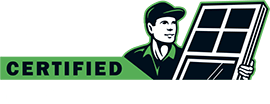Your windows don’t just protect your household from the elements and ensure your home’s aesthetic appeal. They also provide the primary means to control airflow to keep your home comfortable and boost indoor air quality. With the right conditions, your windows can help you make the most of passive ventilation. Renewal by Andersen® of Rapid City explains more.

The Basics
Passive ventilation relies on the natural movement of air as you open your windows. If you live in windy areas, you can expect your home to feel the breeze more as the outdoor air pushes out humidity — a major contributor to indoor heat. While not covered by passive ventilation, fans can improve indoor air circulation and dehumidification in any season.
Window Type
Some windows can help facilitate passive ventilation much more effectively than others. Casement or sliding windows can open fully and let a greater volume of air to move in and out of your rooms. A fully-cranked casement window can catch side breezes due to their outward swing. Awning windows may also be effective for windows in higher floors.
Positioning
Where you place your windows for maximum passive ventilation depends on where the wind is blowing. Ideally, windows should be placed on opposite or adjacent sides of a home to achieve a “cross breeze” that can carry heat out of the house. For example, placing operable windows on both the leeward and windward sides of the home allows for the capture of cool breezes while expelling hot air.
Local Climate
Passive ventilation works differently depending on the season. During summer, passive ventilation during the cooler mornings and evenings can quickly blow away the retained heat of the sun. Once autumn arrives, you can open your windows in the morning and afternoon to capture warm breezes, which you can retain inside your home once the evening arrives.
Renewal by Andersen of Rapid City is the leading window replacement company in the area. Our design consultants and installers are ready to assist you in choosing the best replacement windows that will help encourage passive ventilation in your home. Call us at (605) 341-7831, or fill out this contact form to schedule a consultation.


